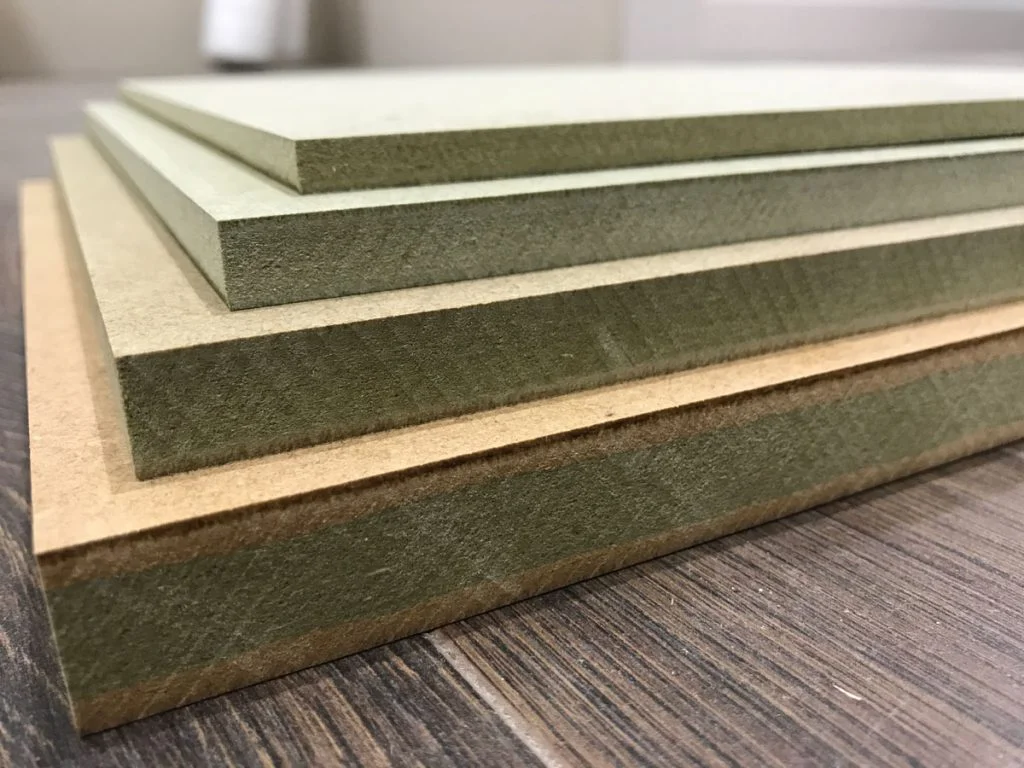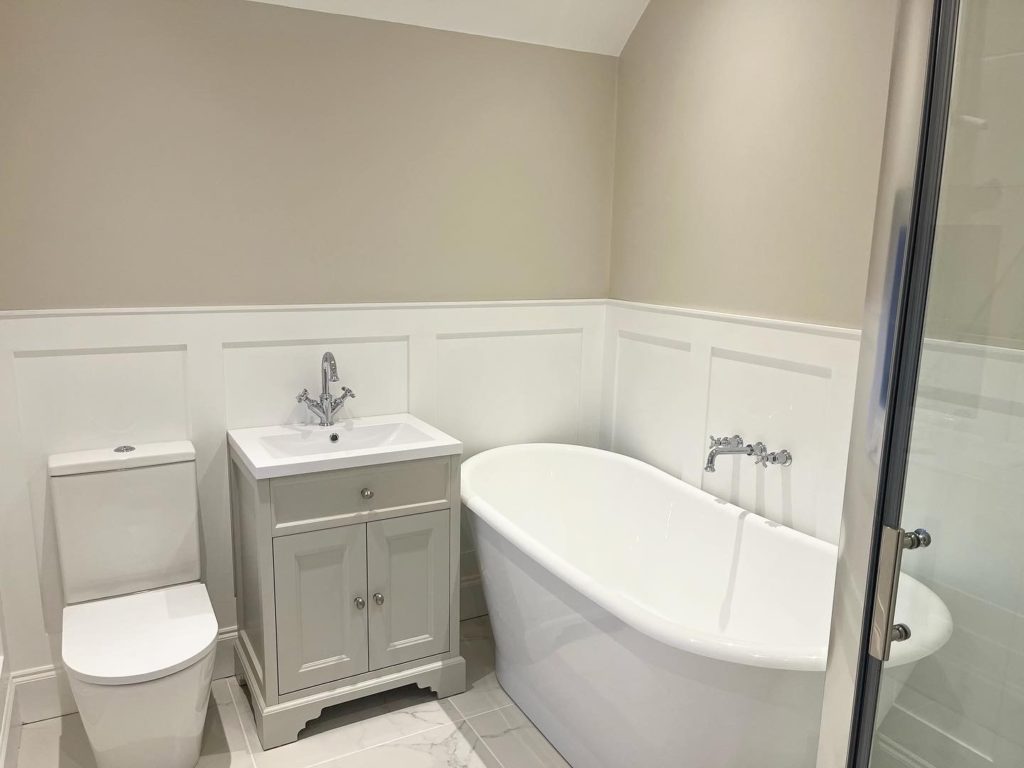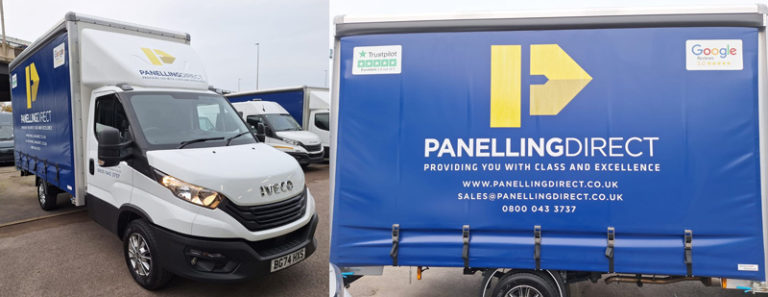
15% OFF TODAY! JOIN OUR NEWSLETTER

Delivered By Our Fleet
View delivery information
5 Star Rated
On Google & TrustPilot

Handmade in the UK
From the finest materials

You might have come across the term “moisture resistant” when you’re planning your next DIY project and looking at wall panelling. But what does it mean? And when is it essential to choose these materials?
In this article, we’re breaking down when to use moisture resistant options, especially in areas like the kitchen and bathroom where humidity levels are higher. So, read on to find out to achieve a timeless, stylish look without compromising on quality, durability, and perhaps surprisingly, low-cost affordability.
Moisture resistant MDF is specially engineered to withstand the challenges of humid environments, unlike traditional MDF, which can warp or swell when exposed to moisture.
In contrast, the moisture resistant version incorporates a moisture-repellent resin. Treatment with this solution provides added protection, and ensures your panelling stays in excellent condition for years.
This outstanding material continues to be wildly popular with tradesmen and DIY fanatics alike for the following reasons:
It’s essential to understand moisture resistant doesn’t mean waterproof. These materials perform well in high humidity spaces. But they’re not suitable for:
But it’s a different story for areas prone to occasional splashes and consistent humidity. This is where treated MDF comes into its own, striking the ideal balance between staying power and style.

Moisture repellent panelling is a smart choice for spaces like the kitchen and bathroom because it looks great, besides being highly practical.
Here’s why it’s worth thinking about:
Adding wall panelling to your kitchen serves dual purposes, boosting its design while protecting surfaces, for full revamps or smaller upgrades.
Popular applications in the kitchen include:
Interested in a couple of insider styling tips?
Bathrooms are notorious for high humidity (for obvious reasons). This makes moisture resistant panelling a non-negotiable choice in the bathroom, whether you’re refreshing an existing space or starting from scratch. In any event, it adds character while standing up to the challenges of a steamy bathroom.
Customers exploring MDF bathroom panelling are regularly tempted by the following options:
Ultimately, it’s a low-cost and effortless way to design a bathroom that looks as good as it performs.
Yes, you can paint moisture resistant MDF. But it calls for proper preparation to avoid compromising the efficacy of the material. So, follow these steps to mitigate any unwanted glitches:
Moisture resistant MDF wall panels are the perfect choice for the kitchen and bathroom, where high humidity levels can cause traditional MDF and other woods to distort over time.
In contrast, these Medite panels are expertly treated to combine the timelessness and chic of MDF with the long-lasting properties needed for damp environments. But this doesn’t mean an inflated price point when you’re on a budget.
For all these reasons, Panelling Direct’s moisture resistant MDF panels lock in the aesthetic appeal of your newly re-envisioned walls, without the worry of damage, highly affordably.
Moisture resistant panelling is a no-brainer for creating a stunning yet durable finish in your bathroom or kitchen (or both).
Not sure where to start? Our team is here to help.
Check out our product range. And get in touch today with any questions, whether you’re planning a simple DIY project or looking for professional installation.
Shop Moisture Resistant Panelling


BEST SELLERS
Bespoke Shaker Style Full/Half Wall Panelling KitNEW KITS
Custom Slat Wall CreatorDelivery Information


Please enter details for a quote

We offer a FREE shaker style wall panelling design service but only for single wall designs. Please enter the details below and we will respond with your design ASAP!

Fill in the form below and one of the team will deal with your request!
